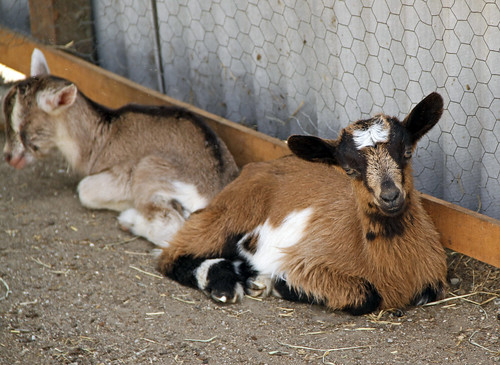Although there is a scarcity of information about enterotoxemia in goats, it is considered to be different from the disease in sheep. Clostridium perfringens type D, C and B are the main organisms involved in caprine enterotoxemia while the pathological role of type A is uncertain.
Epsilon toxin is considered to be the principal toxin involved in caprine enterotoxemia, although potential effects of other toxins are unknown. The peracute form of enterotoxemia (with sudden death) is more common in kids.
Clinical forms of caprine enterotoxemia range from peracute to chronic and are characterized by the clinical prominence of diarrhea, the presence of severe enterocolitis and the rarity of brain lesions (at necropsy), and the frequent failure of vaccination.
A possible explanation for these differences is that epsilon toxin is less promptly absorbed by goat than sheep intestines, due to a caprine-specific response of the intestinal tract resulting in less systemic effects of toxins. The poor efficacy of vaccination may be due to the fact that moderate to high serum levels of specific antibody are needed to protect against both the systemic and the intestinal effects. But the reasons for differences require further investigation.
Source: Enterotoxaemia in goats --A review of current knowledge (Abstract).
Small Ruminant Research Journal. In-press.
Epsilon toxin is considered to be the principal toxin involved in caprine enterotoxemia, although potential effects of other toxins are unknown. The peracute form of enterotoxemia (with sudden death) is more common in kids.
 |
| Dairy goat kids in Brazil |
A possible explanation for these differences is that epsilon toxin is less promptly absorbed by goat than sheep intestines, due to a caprine-specific response of the intestinal tract resulting in less systemic effects of toxins. The poor efficacy of vaccination may be due to the fact that moderate to high serum levels of specific antibody are needed to protect against both the systemic and the intestinal effects. But the reasons for differences require further investigation.
Source: Enterotoxaemia in goats --A review of current knowledge (Abstract).
Small Ruminant Research Journal. In-press.

No comments:
Post a Comment